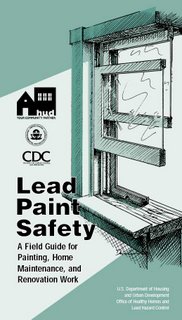Good morning,
I have had several e-mails asking if I'm still alive because you have not heard from me. Well, I'm alive but working very hard. I have some updates for you.
The meeting in Albany: We had a very good showing of members. The City was there and the CPLP.
We all had an opportunity to speak and I must say out of everyone speaking we really knew the EPA standards and put forth a very good case.
Unfortunately the Code Council did vote that this was out of their jurisdiction and could not approve or disapprove of the legislation. The result, we have the legislation going into effect on July 1st, 2006.
Good news:
We have been able to get two amendments to the legislation. We refer to these amendments as the Mary-Lee Amendments. Lee Houstin and myself worked very hard to educate the City on the ridiculousness of these two areas of the code and why the code needed to be changed. The next time you see Lee Houstin be sure to thank her.
The first amendment changed the requirement of a dust wipe on an exterrior porch floor. The legislation was orginally written with the requirement of a dust wipe on exterrior porch floors. This clearly does not follow the EPA standards, EPA does not have a standard for exterrior porch floors.
That wold be same as dust wiping the street. As you can see City Council was fed some real unscientific data. Fortunately, we were able to correct this with scientific data. Enclosed porches are considered a room and enclosed porches can be dustwiped.
The second amendment changed the need for a risk assesor to identify all lead based paint in a unit after a city inspector cited violations. This clearly was of no use. To cite all lead based paint in a unit at a cost of $450.00 per unit was an warranted expense. The city inspector cited the hazards, the need for another inspection was not needed. Also, a risk assessor could not just come into a unit and identify all lead based paint and not cite hazards. Risk Assessors are certified and must follow standards set before them to obtain and keep their liciences. Again, as we educated the City administration we were able to encourage City Council to amend the legislation.
I contiue to work very hard with the City and County. I have attended several meetings with the city and just attended the Advisory Meeting that reports back to the Mayor. I need to report that I was very dissappointed that I was the only housing provider present BUT I am confident that will not happen again. I sat at a table with most members of non-profit agencies and the CPLP. I was allowed to express the devasting effects this legislation will have on our community and to correct individuals when they cited incorrect data. I have submitted a list to the City of those that should be in attendance at these meetings (housing providers, realtors, DSS and the Health Department and an expert risk assessor that knows the standards, hopefully the health department will fill that need).
NYSC was asked to partner with the Health Department in getting out information on the new State Pesticide Law. Soon, you will receive a letter from Dr. Doniger and the NYSC explaining the protocol that is needed when spreading pesticides on your lawns. Also, NYSC has been asked to partner with the county on a new Lead Hazard Control Grant. Of course we agreed, we are not sure if HUD will approve of this grant so don't get too excited until it is approved. We have come along in the last year. We are truely working hand and hand with our community and they realize just how important we are to the vitality of our City.
We have had other accomplishments in our legal battles and I will obtain a qualified report on those and forward within the next week.
I continue to work hand in hand with City Administration to change errors in
the legislation. Hopefully, as they become educated in the standards and
realize the ramifications of some of the code requiredments they will be
open to more amendments. We can only educate and inform with the hope of
change. I will keep you posted as we move along.
Mary D'Alessandro, President
NYSC





 on Wednesday to help the tenants retrieve their belongings. A couple of the tenants received temporary shelter through the Red Cross. All in all, an exciting afternoon.
on Wednesday to help the tenants retrieve their belongings. A couple of the tenants received temporary shelter through the Red Cross. All in all, an exciting afternoon.

